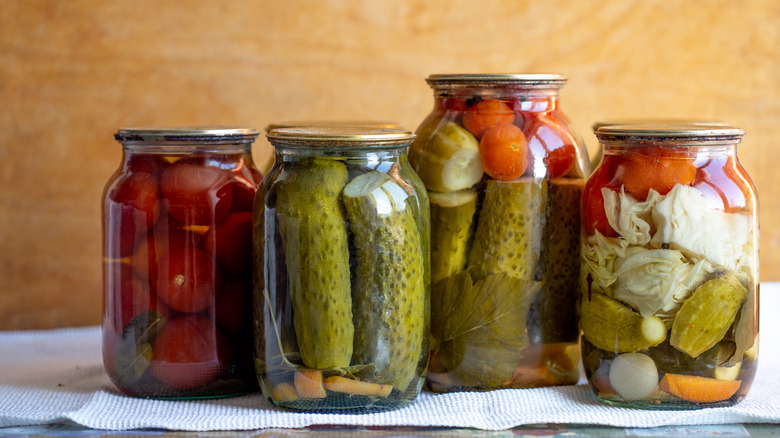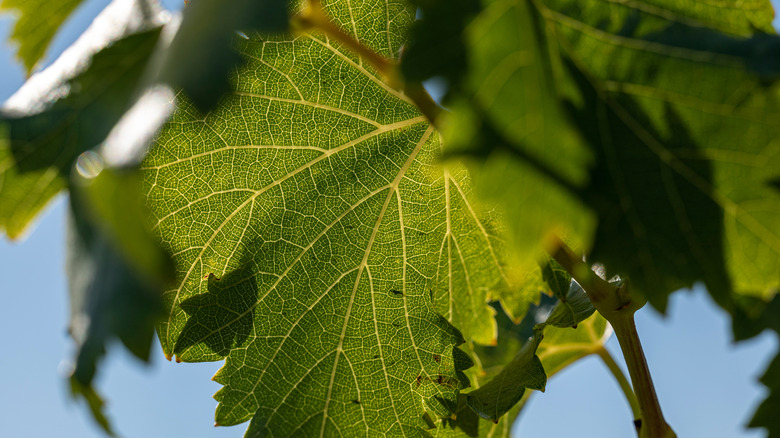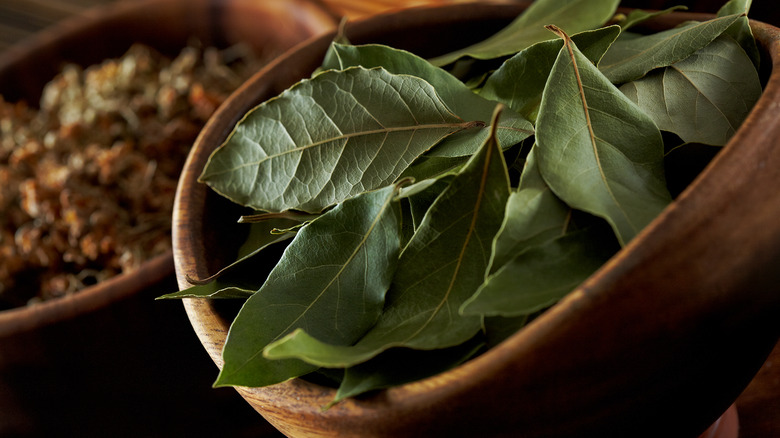The Simple Secret To Getting The Crunchiest Home-Canned Pickles
The only thing better than eating a pickle is eating a pickle you made yourself. As far as canning goes, making homemade pickles is a low-effort, high-reward endeavor that every home cook should have in their back pocket. And while people will have their own preferences when it comes to flavor, any pickle lover will tell you that crunchiness is a universal standard, whether you're working with cucumbers, onions, radishes, or carrots.
As simple as it is to make pickles, getting that perfect crunch can take a little trial and error. Here's a secret to save you some time: add tannins to your brining liquid. Fresh grape leaves, in particular, will help prevent the cell walls of your pickling vegetables from breaking down and becoming mushy, lending them that sought-after audible crunch.
If you can't find fresh grape leaves, there are plenty of other substitutes — some of which you might already have in your pantry. More on that later, but first, it's important to talk about tannins.
Tannins make astringent wine and crunchy pickles
Tannins are often used in the wine world as a way to help classify dry reds or oak-aged whites that produce an "astringent, mouth-coating feeling," as Wine Enthusiast has it. For example, red wines made from thick-skinned grapes, such as Cabernet Sauvignon and Syrah, are high in tannins, while wines made from grapes with more delicate skins, like Pinot Noir, are lower in tannins and, therefore not as dry. (Paul Giamatti delivers an iconic monologue about the grape in the movie "Sideways.")
On a more technical level, tannins are polyphenols (plant compounds rich in antioxidants) that occur naturally in certain species of plants, including grape leaves. According to the U.S. Forest Service, tannins "bind readily with proteins, cellulose, starches, and minerals" and protect substances from decomposition.
Rest assured that adding tannin-rich ingredients to your pickle brine won't make your pickles taste like a full-bodied red wine. It will simply keep your cukes firm and provide some extra crunch.
Try grape leaves, bay leaves, or tea leaves
While canned and jarred grape leaves are fairly commonplace at the supermarket (more often than not, you'll see them stocked among the Mediterranean, Balkan, and Middle Eastern products), the fresh ones are found mainly at specialty food shops or online. If you can't track them down, you can also use fresh oak leaves, cherry leaves, horseradish leaves, green banana leaves, or bay leaves. Still no luck? Loose leaf tea leaves (or a high-quality tea bag with whole tea leaves) will work in a pinch.
According to the Smithsonian Asian Pacific American Center, using tea leaves as your tannin agent might also add a subtle flavor to your pickles. To make the brine for tea-infused quick pickles, you'll want to mix one teaspoon of salt with ½ cup of white distilled vinegar, ½ cup of water, 6 tablespoons of sugar, and a teaspoon of "mildly flavored" tea leaves, such as oolong or jasmine. Happy pickling!


